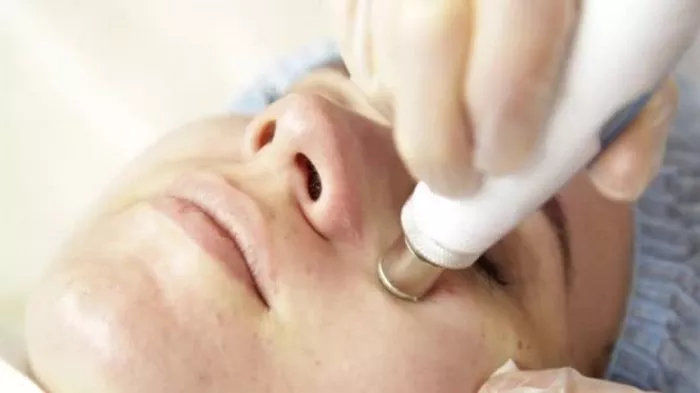Microdermabrasion and chemical peels are popular skincare treatments that offer various benefits for improving the texture, tone, and overall appearance of the skin. Both procedures exfoliate the outermost layer of the skin to reveal a fresher, smoother complexion. If you’re considering combining these treatments, it’s essential to understand the appropriate timing to ensure optimal results and minimize the risk of adverse effects. In this article, we will explore the ideal timing between microdermabrasion and chemical peels to help you make informed decisions about your skincare regimen.
Understanding Microdermabrasion and Chemical Peels
Microdermabrasion is a non-invasive procedure that uses a device to gently exfoliate the skin. It works by removing dead skin cells and stimulating cell turnover, resulting in a rejuvenated appearance. The treatment is effective for addressing concerns such as dullness, uneven texture, fine lines, and mild acne scarring.
Chemical peels, on the other hand, involve the application of a chemical solution to the skin to remove damaged outer layers. The depth of the peel can vary, ranging from superficial to deep, depending on the specific needs and desired results. Chemical peels can improve the appearance of acne scars, sun damage, hyperpigmentation, and wrinkles, among other skin concerns.
Factors to Consider Before Combining Treatments
When considering the timing between microdermabrasion and a chemical peel, several factors should be taken into account. These include the type and depth of the chemical peel, the condition of your skin, your skin’s sensitivity, and your individual healing capacity. Consulting with a skincare professional is recommended to assess your skin’s condition, determine the most suitable treatments, and establish an appropriate timeframe.
Ideal Timing for Combining Treatments
To ensure optimal results and minimize the risk of skin irritation or complications, it is generally recommended to wait at least two to four weeks between microdermabrasion and a chemical peel. This timeframe allows the skin to fully recover from the microdermabrasion treatment before undergoing the more intensive exfoliation of a chemical peel.
Microdermabrasion, being a less invasive treatment, can be performed more frequently, typically every two to four weeks. However, chemical peels penetrate deeper into the skin and can cause more significant exfoliation and peeling. Therefore, allowing an adequate recovery period between treatments is crucial to avoid over-exfoliation and potential skin damage.
It’s important to note that the specific timing may vary based on individual factors, such as skin sensitivity, the depth of the chemical peel, and the recommendation of your skincare professional. They will evaluate your skin’s response to the treatments and provide personalized guidance on the appropriate interval between procedures.
Benefits of Combining Microdermabrasion and Chemical Peels
Combining microdermabrasion and chemical peels can offer enhanced benefits for improving the skin’s texture, tone, and overall appearance. The exfoliation provided by microdermabrasion helps to remove dead skin cells and prepare the skin for better absorption of the chemical peel solution. This combination can result in a more effective treatment, as the chemical peel can penetrate deeper and target specific skin concerns.
By removing the outermost layers of the skin through microdermabrasion and subsequently applying a chemical peel, the overall exfoliation process is intensified. This can lead to improved skin texture, reduced pigmentation irregularities, diminished acne scarring, and a more youthful complexion.
Post-Treatment Care and Precautions
After receiving microdermabrasion or a chemical peel, it’s essential to follow post-treatment care instructions provided by your skincare professional. These instructions may include:
Avoiding Sun Exposure: Both microdermabrasion and chemical peels can make your skin more sensitive to the sun. It’s important to protect your skin by applying sunscreen and wearing protective clothing, hats, and sunglasses when going outside.
Moisturizing: Keep your skin moisturized to promote healing and prevent excessive dryness or flaking.
Avoiding Harsh Skincare Products: Refrain from using harsh or abrasive skincare products that could irritate your skin. Stick to gentle cleansers and moisturizers recommended by your skincare professional.
Avoiding Picking or Scratching: It’s crucial to resist the temptation to pick or scratch at any peeling or flaking skin. Allow the skin to naturally shed and heal.
Conclusion
Microdermabrasion and chemical peels are effective skincare treatments that can help improve the texture, tone, and overall appearance of the skin. When considering combining these treatments, it’s important to adhere to an appropriate timeframe to ensure optimal results and minimize the risk of adverse effects. Waiting at least two to four weeks between microdermabrasion and a chemical peel allows the skin to fully recover from the less invasive procedure before undergoing the more intensive exfoliation of a chemical peel. Consulting with a skincare professional is recommended to assess your skin’s condition and provide personalized recommendations for the ideal timing between these treatments. By following proper post-treatment care and precautions, you can maximize the benefits of combining microdermabrasion and chemical peels for a revitalized and rejuvenated complexion.


